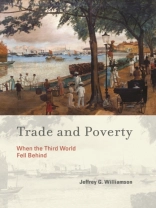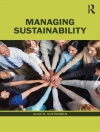How the rise of globalization over the past two centuries helps explain the income gap between rich and poor countries today.Today’s wide economic gap between the postindustrial countries of the West and the poorer countries of the third world is not new. Fifty years ago, the world economic order-two hundred years in the making-was already characterized by a vast difference in per capita income between rich and poor countries and by the fact that poor countries exported commodities (agricultural or mineral products) while rich countries exported manufactured products. In Trade and Poverty, leading economic historian Jeffrey G. Williamson traces the great divergence between the third world and the West to this nexus of trade, commodity specialization, and poverty.Analyzing the role of specialization, de-industrialization, and commodity price volatility with econometrics and case studies of India, Ottoman Turkey, and Mexico, Williamson demonstrates why the close correlation between trade and poverty emerged. Globalization and the great divergence were causally related, and thus the rise of globalization over the past two centuries helps account for the income gap between rich and poor countries today.
Jeffrey G. Williamson
Trade and Poverty [PDF ebook]
When the Third World Fell Behind
Trade and Poverty [PDF ebook]
When the Third World Fell Behind
Купите эту электронную книгу и получите еще одну БЕСПЛАТНО!
язык английский ● Формат PDF ● страницы 320 ● ISBN 9780262295727 ● издатель The MIT Press ● опубликованный 2011 ● Загружаемые 3 раз ● валюта EUR ● Код товара 7973162 ● Защита от копирования Adobe DRM
Требуется устройство для чтения электронных книг с поддержкой DRM










